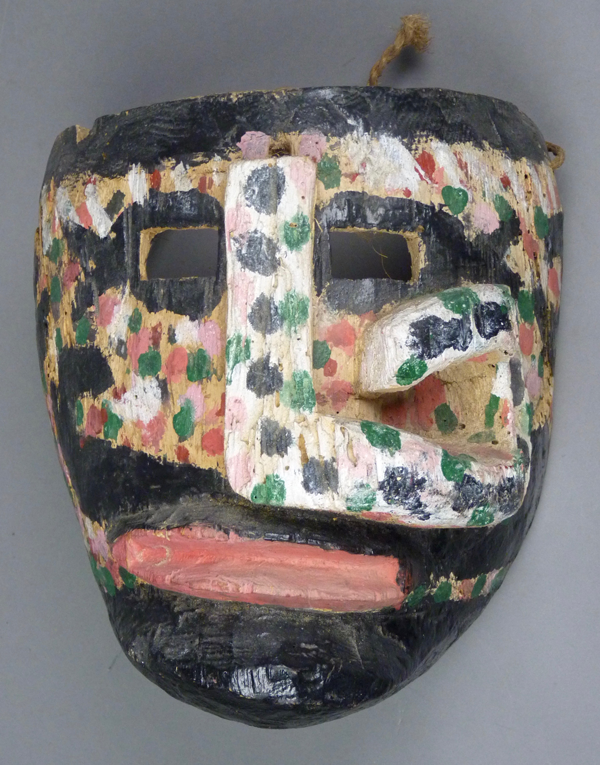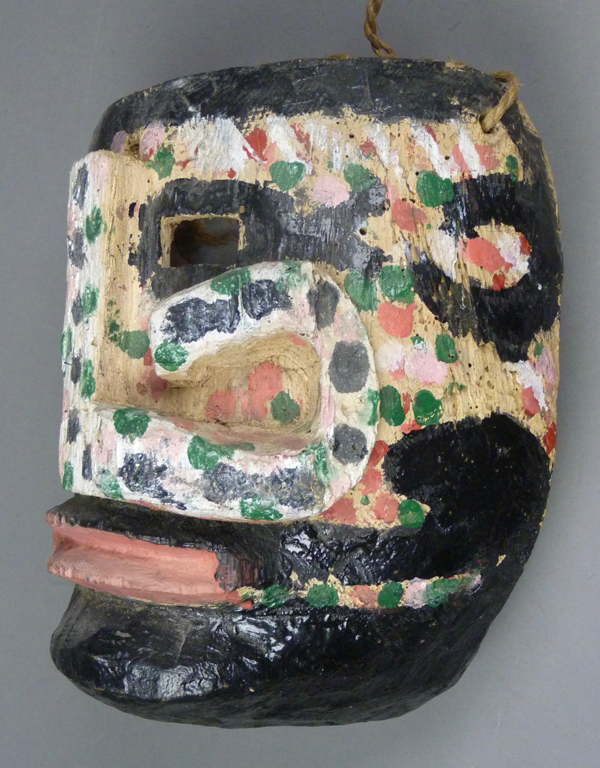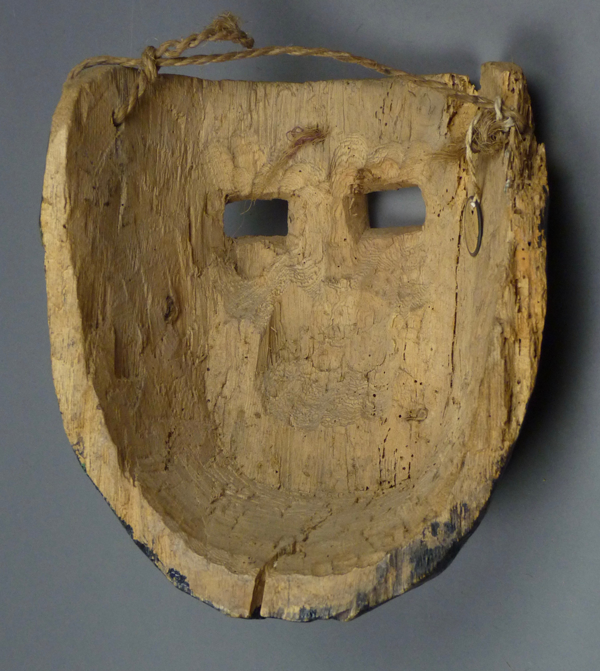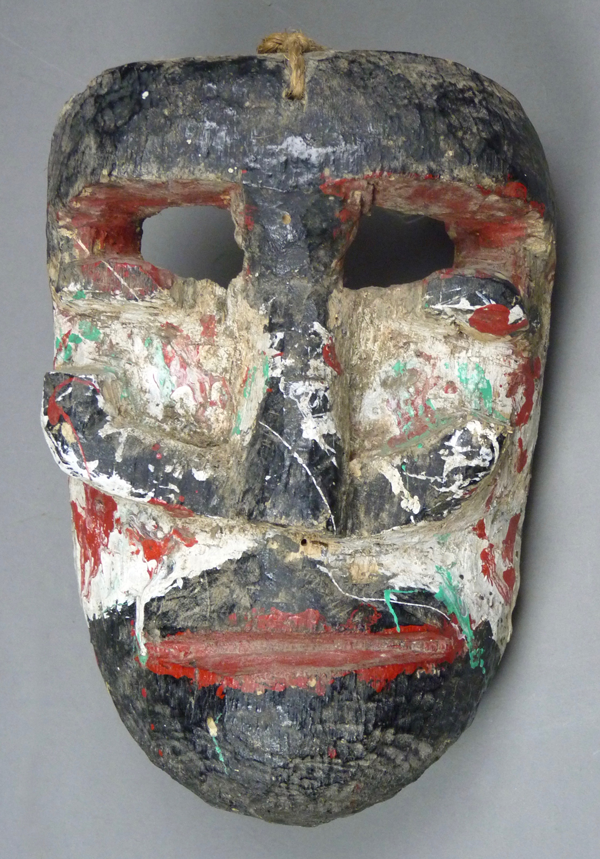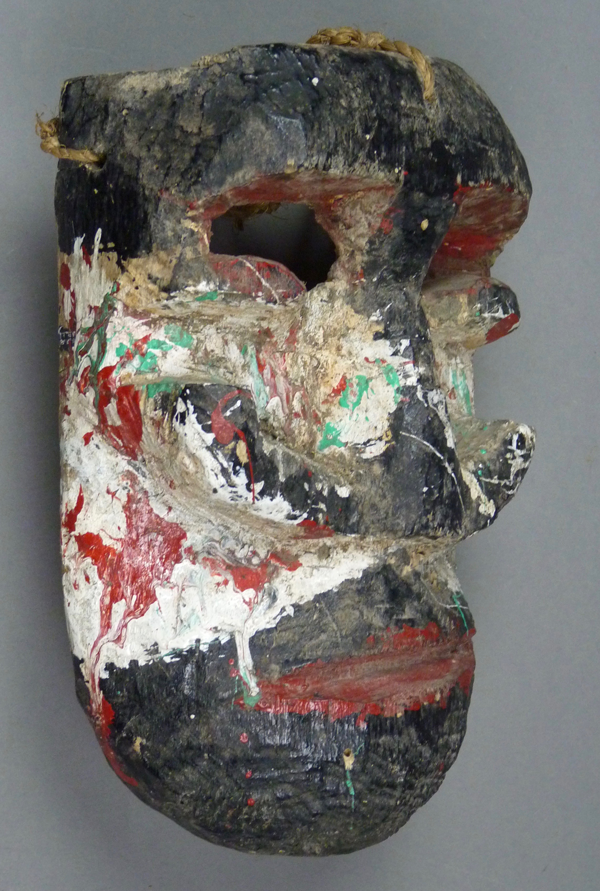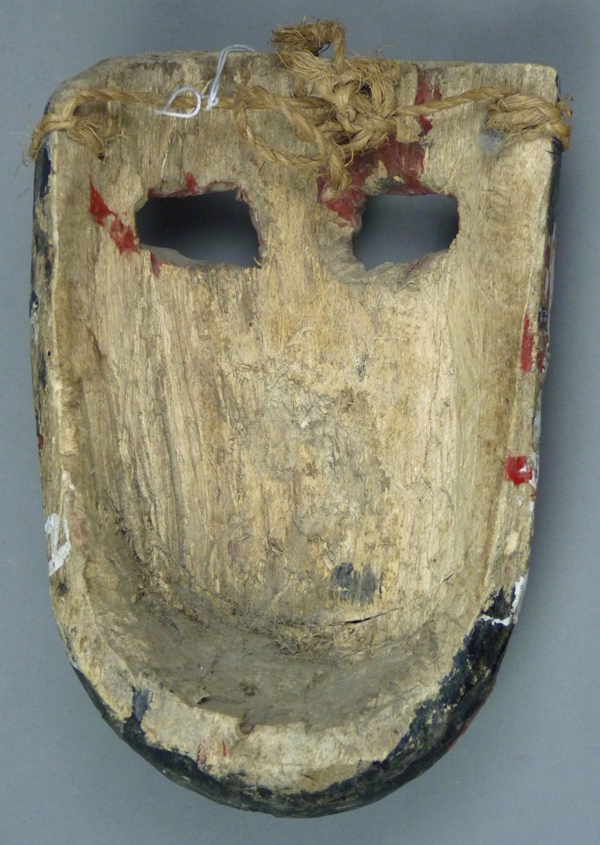Once again this week I will examine a pair of Tlacololero masks with unusual, but somewhat related designs; they blend nose and mustache elements in an unexpected manner. I call these noses “geometric,” for want of a better term. Probably the best label for the first of these masks would be “surreal.” In a search of the Internet I found only one photo of another mask like the first. That one was said to be from Tixtla, Guerrero.
I purchased this first mask from René Bustamante in 1994. He reported that it was found in la Palmita, Guerrero, a place that is very small, and far away from the area where Tlacaloleros usually dance. I obtained the second mask in the same year from the Cavin-Morris gallery in New York City; it was said to be a Tlacololero from Zitlala, Guerrero. Here is the first.
Obviously this is a rather primitive mask, with its relief carved nose that twists around to one side as if it becomes a one-sided mustache. The paint is also unusual, with multicolored spots. The carving of this mask is somewhat crude. However, the overall design is powerful and striking, and reminds me of images of god impersonators in the Codex documents, such as Codex Nutall. So, although this is a very unusual mask, it continues a theme from recent weeks, of god imagery.
This mask is 8 inches tall, 7½ inches wide, and 4½ inches deep.
Although this is difficult to see from the photo, the back of this mask demonstrates differential wear, with moderate staining around the inside of the rim, in comparison to less staining on the flat central section. This strange mask was indeed danced. The right upper corner was damaged from insect infestation, and this occurred after it was carved and initially used.
Here is the second of these masks. It has a relief carved nose combined with relief carved mustaches on both sides. It too has strange paint. It does look more like typical Tlacololero masks than does the first.
Of course the bizarre paint on the cheeks may have been a very later addition.
This mask is 8½ inches tall, 6 inches wide, and 3 inches deep.
The back of this mask has more obvious staining from use, compared to the first.
This completes my review of Tlacololero masks. Next week I will show some masks from the Pescadores (fishermen’s) dance, which is found in the same coastal area of Guerrero.
Bryan Stevens

